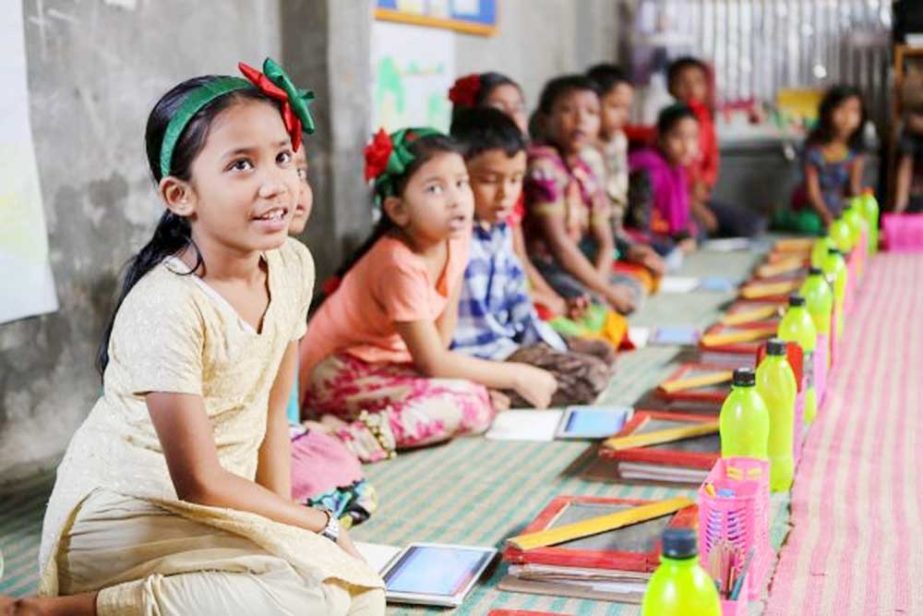
Md Bayazid Khan :
Today’s world is not like a bed of roses. People are to face a variety of natural and man made calamities nowadays. Students are not an exception to combat the disasters and as a result they suffer massively regarding disruption to learning. On the other hand, tomorrow’s competitive and the most demanding labour markets crucially need skilled technologically and vocationally sound young workforces. As technological and digital development happens frequently and rapidly, therefore keeping young workforces in lifelong learning is indispensable to make them adaptable to the changed technology.
Besides, the world is facing a global “Learning Catastrophe” as the way of education or learning of millions of children was disrupted by the Covid-19 pandemic. The biggest impact on learning poverty happened due to the corona pandemic in low and middle income countries of South Asia, Latin America and the Caribbean and Africa. These countries are also the victims of frequent natural calamities every year. So, learning losses of hundreds to thousands of young learners of lower socioeconomic backgrounds and the disadvantaged outlying groups are mounting in those countries because of the adverse effect of natural and man made disasters every year.
However, introduction and implementation of transforming education must recognize that — schools should be well prepared and equipped for continuation of teaching-learning activities all the year round without any shutdown due to the pandemic or natural calamities. Schools must have flood/tidal surge, cyclone/tornado and earthquake resilient multistoried buildings with adequate facilities for using shelter centres. Schools should have facilities for using both online and offline sources in teaching and practices of both the teaching methods might be continued on a regular basis at schools. Moreover, students or parents need to provide digital devices (if necessary) for online sources to be used. There may be the provision of introducing community or home based learning facilities under the facilitation of volunteers (local college or secondary school students, ex. teachers, parents or guardians etc ) and with the supervision of concerned school teachers in the non-tech areas’ schools rapidly during the disasters hit. Introduction of community based radio for learning and dedicated TV channel for education may keep students in learning during the disasters or even helpful to them to strengthen their learning all the year round.
The primary education curriculum should incorporate natural calamities concerning adaptable measures. In addition, the curriculum should also have learning opportunities in climate-smart and disaster friendly cultivation, farming, afforestation etc. Livelihood education must be introduced to the primary tier of education to meet future competitive labour market demand for skilled technologically and vocationally sound young workforces. In the last grade of the primary education cycle, attachment of individual student or a group of students to household activities or family business/professions or school adjacent agriculture farming or business oriented technical institutions etc for a stipulated period may become an encouragement to them towards technical and vocational education in the next stages of education and this should be mandatory.
Last but not the least, the government, school authorities and the teachers need to focus on ensuring inclusiveness in attaining functional learning of literacy and numeracy skills as well as skills for life, work and sustainable development among learners. To ensure this, the following five elements are to be achieved rapidly.
Identifying children with dropped out and poor attendance at schools should support them to return and to stay in schools. Back-to-school campaigns with bringing families under social security networks, launching school feeding programmes, removing all kinds of school fees & providing books free of charge like Bangladesh and providing school uniform and learning materials free of cost must encourage children to come, stay and give attention to school and classroom activities regularly.
Learning losses must be mitigated immediately after the disasters and commencement of learning recovery programmes inevitably require identification of concerned children. Measuring children’s current learning levels in reading and understanding of texts in Bengali and English along with learning levels in basic numeracy skills by applying formative assessment tools may identify children with supportive measures to be needed. Learners need support in and outside schools.
In the classroom teachers should pay additional attention to them or if possible they must be supported by extra teachers. Before starting each and every lesson in the classroom, a few minutes must be spent by the teachers on teaching and doing practice to identified children in developing reading and basic numeracy skills engaging other children with a classwork. Capable parents or guardians may be asked to support them at home and those who are first generation learners or don’t have a learning friendly atmosphere at home, the government may think of launching a “Before or after school learning program” by motivating NGOs. Learning recovery efforts should focus only on literacy and numeracy becoming teachers free from excessive burden.
To emphasize on children’s learning and enabling school systems exclusively for adopting effective teaching-learning practices, teachers and schools must be debarred from non-academic and non-schooling activities or programmes.
(The writer works for primary
education in Bangladesh).

